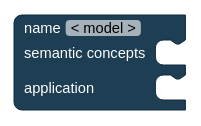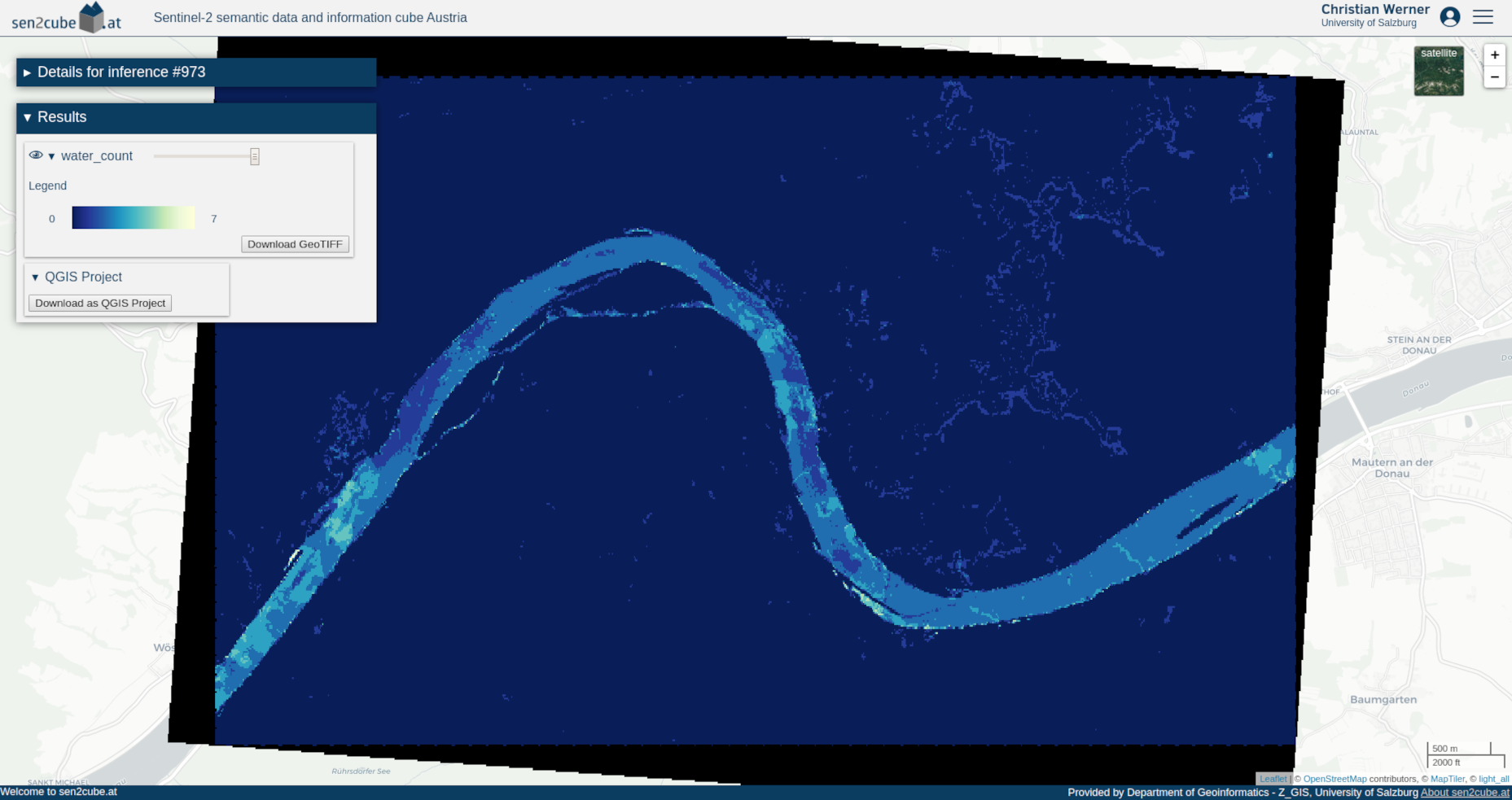4 Model structure
The model itself defines the output. Besides choosing from pre-constructed models within the knowledgebase, new models can be constructed from scratch. Three main components define a model:
The semantic concept dictionary serves as a translator between descriptions of real-world entities and raw image data. For example, suppose we want to know which observations can be identified as water. In that case, we need to specify how we define water given our data. What does water mean in terms of our data values? Creating a semantic concept dictionary requires expert knowledge. It is usually not a task that non-experts take on by themselves.
The application component is then used to directly formulate the semantic query by using the defined semantic concepts. Since it is defined what water means in terms of the data, we don’t have to worry about the data anymore but can use common language to describe the desired output. For example, “how many observations were defined as water inside my area-of-interest, during July 2020”. Such a question forms a single result. A model can contain multiple results.
For each model, a set of metadata is stored, which includes owner (creator), create date, description, and name.
The model construction is designed to be as intuitive as possible by connecting several building blocks, that all represent a distinct, clearly defined task or value. See the building blocks chapter (5) for an in-depth description of them. The starting point is an empty model:

See below an example of a simple model. In the semantic concept dictionary, the entity water is defined in terms of the data. Each observation inside the spatio-temporal extent of the query is labelled as either being water or not. The application component contains a single result, in which the number of water observations is counted over time.

Example model for counting water observations over time
The result is a map in which each spatial location (modelled as a cell in a spatial grid) contains a water count value.

Result of counted observations over time
The following video shows the development process of a model (External Youtube Link).